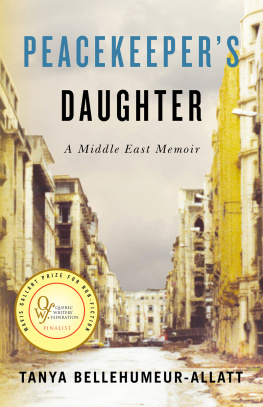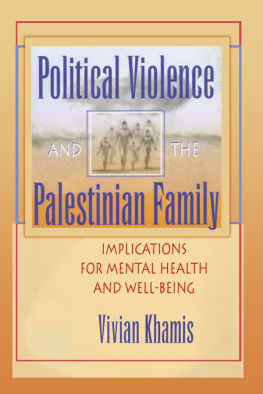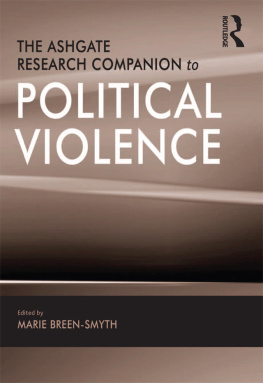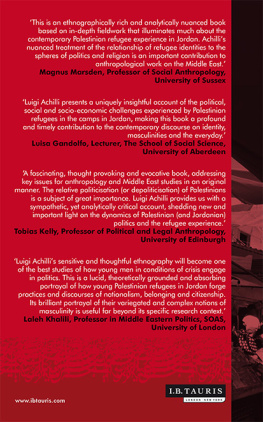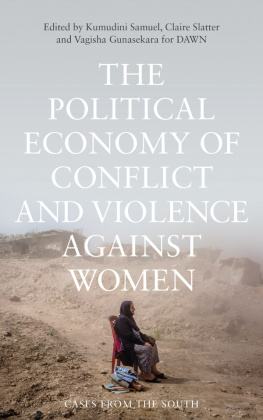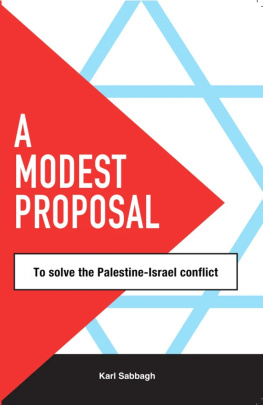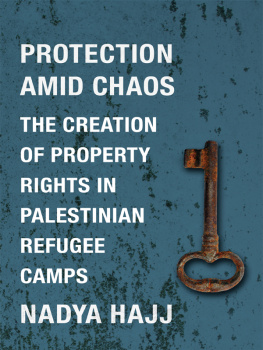Published in 2014 by I.B.Tauris & Co. Ltd
6 Salem Road, London W2 4BU
175 Fifth Avenue, New York NY 10010
www.ibtauris.com
Distributed in the United States and Canada
Exclusively by Palgrave Macmillan
175 Fifth Avenue, New York NY 10010
Copyright 2014 Maria Holt
The right of Maria Holt to be identified as the author of this work has been asserted by the author in accordance with the Copyright, Designs and Patents Act 1988.
All rights reserved. Except for brief quotations in a review, this book, or any part thereof, may not be reproduced, stored in or introduced into a retrieval system, or transmitted, in any form or by any means, electronic, mechanical, photocopying, recording or otherwise, without the prior written permission of the publisher.
Library of Modern Middle East Studies: 123
ISBN: 978 1 78076 101 5
eISBN: 978 0 85773 596 6
ePDF: 978 1 78673 952 0
A full CIP record for this book is available from the British Library
A full CIP record is available from the Library of Congress
Library of Congress Catalog Card Number: available
Acknowledgements
This book, which began as part of my doctoral thesis in 1999, has been a labour of love. I would like to thank the many generous people, women and men, who went out of their way to help and guide me in Lebanon, especially those who contributed their life stories. In particular, I must express my most heartfelt appreciation to Kholoud Hussein for her patience, unfailing humour and hospitality. Thanks also to the UK Arts and Humanities Research Council, which funded my project on Palestinian refugee women in Lebanon, in terms of memory and identity, in 20067; to the Department of Politics and International Relations at the University of Westminster, which funded my fieldwork visit to Lebanon in 2011; to Maria Marsh at I.B.Tauris, who gave me the opportunity to write this book; and to the two anonymous reviewers for their very constructive suggestions. Most of all, I would like thank and dedicate this book to my husband, Ken Sabel, who provided support, good food and laughter throughout the often painful process of writing.
Maria Holt
London
2013
Chapter 1
Introduction
The Palestine of Our Imagination
Whether represented as trauma or destiny, the historical domain of violence becomes the basis for the constitution of collective narratives of origin, loss, and recovery, as well as the precondition for any future reconciliation. Rather than being unitary and stable, such narratives are always contested, and constantly are reworked and rewritten in relation to the political experiences and requirements of each successive generation.
Yasmine
Yasmine's story highlights the three main themes explored in this book. First, it captures the notion of homelessness and the pain of a people driven out of their homes and transformed into stateless refugees. It is a story of forced and recurring migration, of what Aouragh calls exiled mobility. She herself has been politically active since she was a young woman in Ain el-Hilwe camp in the south, first with Fateh and later with Hamas. She asserted that many women are active in politics and added that, in her view, political activity decreases the possibility of violence. Despite her perceived lack of safety or belonging, she is engaged in her community as a volunteer with Hamas and a participant in protest marches and non-governmental organization (NGO) awareness sessions for women. The third element is imagination. There is a tension between the need to recreate home, a secure place in which to enact family life, and a notion of home that exists, in Yasmine's words, only in the imagination. The majority of refugees have an idea of what Palestine looks or looked like and they are aware of the symbolic meanings it possesses. This is a very powerful narrative; although it does not constantly preoccupy them, it is ready to emerge as a compelling discourse, when individuals are invited to reflect.
These three themes will be more fully explored in subsequent chapters, principally through the voices of refugee women, for whom violence and the resisting of violence are part of everyday life. I will explore the effects of violence on Palestinian refugee women in Lebanon and will argue that they rely on several sources of strength to counter the debilitating effects of violence: first, they are supported by the solidarity of the camp and national community; second, they deploy a range of narratives that are always contested, and constantly are reworked and rewritten; and, fourth, and perhaps most importantly, they rely on the comfort of religion as both faith and a form of activism. I will make this argument by analysing women's accounts of violent incidents and the ways in which they have felt disempowered by these events and how they resisted, fought back and survived them. The responses of individual women are informed by a range of factors on the ground, from their own role in the violence, their perceptions of victimization and agency and the consequences of violent episodes. For example, the entire Palestinian nation was victimized in 1948 as the majority was forced from the land, but the effect on individuals and families was uneven and these subtle shifts in reaction emerge from listening to the accounts of those who fled and the inherited memories of their descendants.
I am challenging the notion of an unchanging scenario of Palestinian tragedy by demonstrating that individuals and families react to emergencies in the most immediate and appropriate way. There are also, I think, significant differences between the reactions of men and women and the ways in which they deal with trauma, and one of my objectives is to move the debate on from the familiar linkages between, on the one hand, women as reproducers of the nation and men as protectors of the nation's honour and, on the other, women as subordinated to male heroism. According to Palestinian legend, the woman too can become a heroine by showing great courage and setting an example to other Palestinians on how to behave at [times] of great stress when weaker people may feel defeated and crushed. What comes across strongly in the interviews with refugee women is the diversity of response, which is informed both by the collective narratives of origin, loss, and recovery and the pressing need to address current problems. Women have demonstrated a broad range of coping mechanisms, from defiance and action to stoicism and, for some, self-pity and despair.
My focus is on violence and its effects on women's subjectivity; I ask how women define violence, how their definitions may differ from those of men, and what tools they have used to protect themselves from many forms of violence. I will argue that women's means of protection or empowerment are not constant; they change in shape and emphasis and rely sometimes on action and at other times on faith or restraint. Increasingly, from my observations, religious identity is taking a more prominent role and, for some women, has become a method of protest and self-assertion. Above all, like women everywhere, my interlocutors are complex beings, assailed by threats of violence and subjected to insecurity but, at the same time, living multi-layered and nuanced lives. A devotion to the safety and well-being of their family lies at the core of women's concerns. This is an important source of strength and continuity, and also places them within a conventional framework of Arab-Muslim practices. But their lived experiences go far beyond convention. Into her disquieting narrative, Yasmine threaded the symbols of normal life: marriage, home-making, protection of children and involvement in the community; and yet, beyond these familiar props lies a world of terrifying uncertainty and the ultimate absence of home, and this is a reality she has had to contend with throughout her life.


